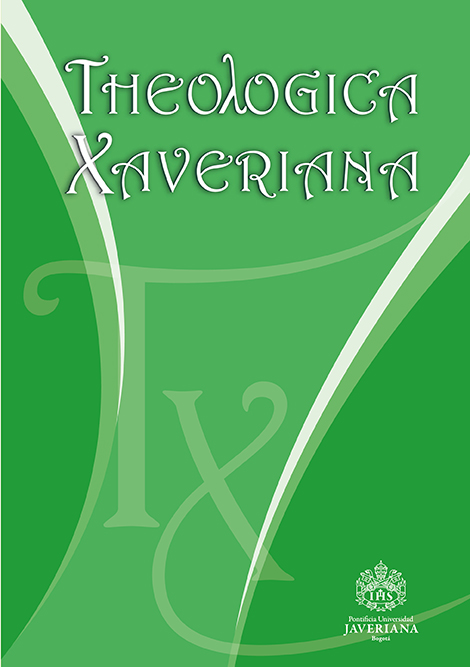Resumo
In this article, driven by the hermeneutics of the phenomenon and specialties, I propose the structuring of a theoretical-theological framework capable of identifying the categories and elements inherent to the antagonism between good and evil present in the order of created things, substantially in the human ontology. In this epistemological path, by the methodological option, I will go through the syntagmatic itinerary of evil, in its nuances and territorial thanatopic demarcations to antagonistically demonstrate the elements and traits that constitute the good that orbits the entire divine cosmogenesis. These elements that involve the positive response of humanity seen from the ethical and moral evaluative praxis to the paradigm of human faith shown in the lives of individuals and societies, the framing of the spatial specter of opposition to chaos in the midst of it. These spaces of axiological opposition and cosmic redemption are generated from the (in)carnational ontological-territorial phenomenon of the manifestation of the (trans)forming presence of Christ and his Basileia, through which the Christophanic theophany in its immanent transcendence reveals to us the heterotopic molds what I call Christotopia, the spaces of Christ.
They are theotopic spaces from outside, but substantially, biotopic spaces from inside. They are spaces of life and meaning in which christophany is established in a diametrically opposed way to spaces of death and non-meaning which are installed throughout time and society in all its spheres. In the light of Foucault’s heterotopic metaphor, the Christotopias focus on human existence and can be seen as boats launched into the infinite sea of the thanatopic cosmos. The Christotopias are places without a place; places of re-signification and survival; spaces of faith and decision, life and salvation, palpable spaces of overlapping deviation from death, closed, but at the same time open, spaces of art, poetry and melody amidst the noises of this world, real places where utopias become realizable, palpable, and dreams in Jesus Christ become possible.
Bachelard, Gaston. La poétique de l’espace, Paris: Les Presses universitaires de France, 3e édition. Collection: Bibliothèque de philosophie contemporaine, 1961.
Balandier, Georges. O Poder em Cena. Brasília: Editora Universidade de Brasília, 1980.
Balibar. Etienne. Outlines of a Topography of Cruelty: Citizenship and Civility in the Era of Global Violence. Constellations 8 (2001):15 -29.
Barth, Karl. Credo. Comentários ao Credo Apostólico, São Paulo: Novo Século, 2005.
______. Introdução à teologia Evangélica, São Leopoldo: Sinodal, 1989.
Berger, Peter. The Sacred Canopy: Elements of a sociological theory of religion, Doubleday & Company, Inc. Garden City, New York, 1967.
Bultmann, Rudolf. Teologia del Nuevo Testamento, Salamanca: Ediciones Sígueme, 1981.
Debord, Guy. La Société du spectacle, Paris, Buchet-Chastel, 1967.
Durkheim, Émile. De la division du travail social, Quadrige, Presses Universitaires de France, 1991.
Eliade, Mircea. The sacred and the profane: the nature of religion, New York: A Harvest Book Harcourt, Brace & World, 1963.
Falque, Emmanuel. Le verbe et la chair et Théologie. Roma: Università Gregoriana, 2011.
Foucault, Michel. “Des espaces autres”. Empan, érès 54 (2004): 12-19. (Conférence du 14 mars 1967). Article publié dans l’ouvrage posthume Dits et écrits.
______. The Subject and Power: Critical Inquiry. The University of Chicago Press, 1982.
Gingrich, F. Wilbur. Léxico do Novo Testamento grego / português. São Paulo: Sociedade Religiosa Edições Vida Nova, 1993.
Gordon, R. The Roman Imperial Cult and the question of the power. J. A. North y S. R. F. Price (eds.), The religious history of the Roman Empire: pagans, Jews, and Christians, Oxford (2011): 37-70; 53.
Guerra, Danilo Dourado. “Heróis em cena: a construção paradigmática contracultual da mesocristologia joanina”. Tese de Doutorado em Ciências da Religião, Pontifícia Universidade Católica de Goiás, 2018.
Heidegger, Martin . Sein Und Zeit, Max Niemayer Verlag: Tubingen. 1993 (1927).
Henry, M. Incarnation: Une philosophie de la chair, Paris Seuil, 2000.
Hetherington, Kevin. The Badlands of Modernity, Heterotopia and Social Ordering. London: Routledge, 1997.
Konings, Johan. “Meu reino não é deste mundo”: de que se trata? Revista de Interpretação Bíblica Latino-Americana 17 (1994): 54-64.
Lewis, C. S. Mere Christianity, New York: Macmillan, 1960.
Massey, Doreen. For space. London, 2005.
Mateos Juan y Barreto Juan. Vocabulário teológico do Evangelho de São João, São Paulo: Paulinas,1989.
______. O Evangelho de São João: análise linguística e comentário exegético, São Paulo: Paulus, 1999.
Mbembe, Achille. Necropolitics. Public Culture 15 (2003): 11-40.
Richardson, Don. Eternity in Their Hearts: Startling Evidence of Belief in the One True God, Ventura: Regal Books, 2005.
Richter Reimer, Ivoni. Construção de heterotopias socioculturais nas obras de comunidades judaico-cristãs. Caminhos 3 (2004): 113- 122.
Santos, Douglas Oliveira dos. “Monoteísmo Originário: linguagem, identidade e contracultura a partir de Hebreus”. Tese de Doutorado em Ciências da Religião, Pontifícia Universidade Católica de Goiás, 2019.
Tuan, Yi-Fu. Space and Place: The Perspective of Experience. Minneapolis: University of Minnesota Press, 1977.

Este trabalho está licenciado sob uma licença Creative Commons Attribution 4.0 International License.


